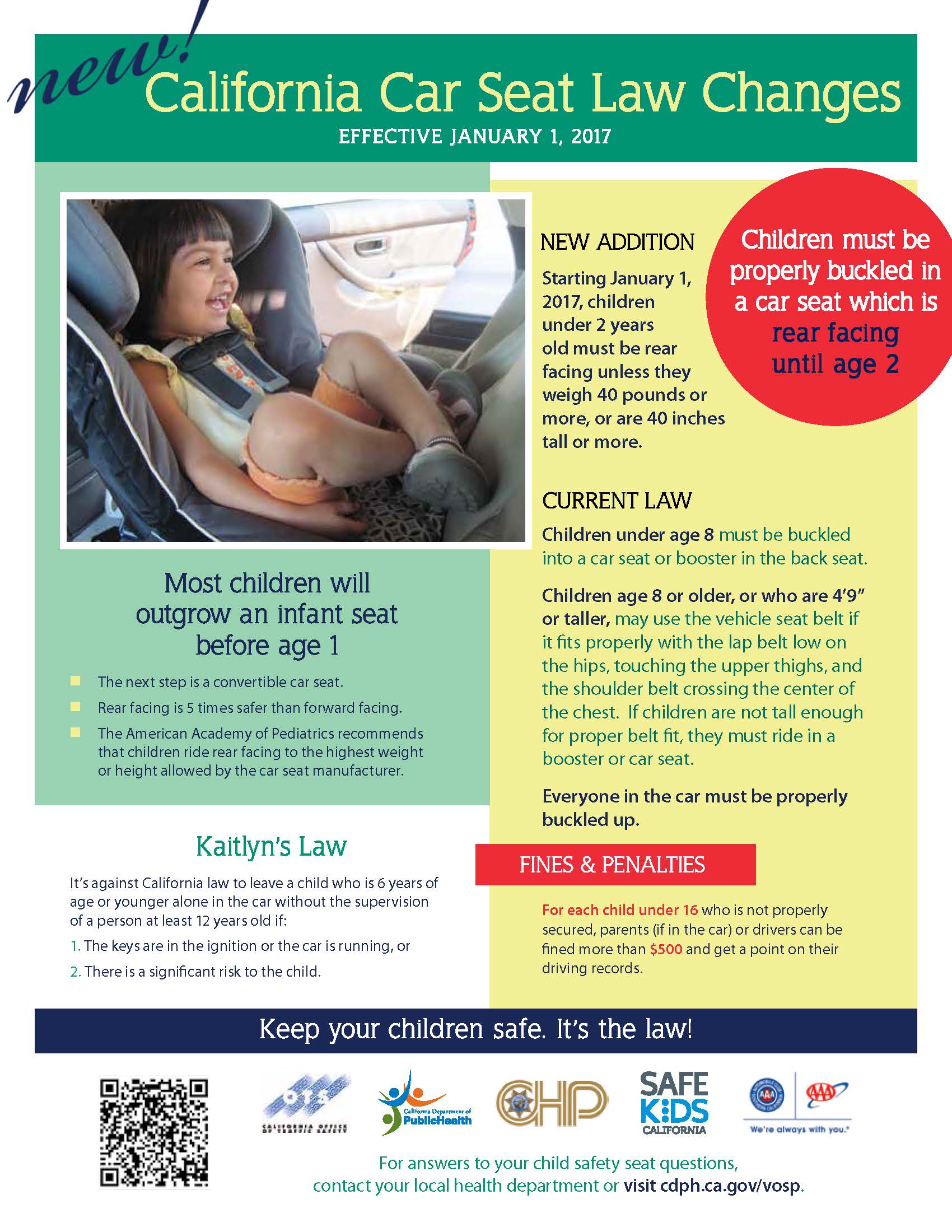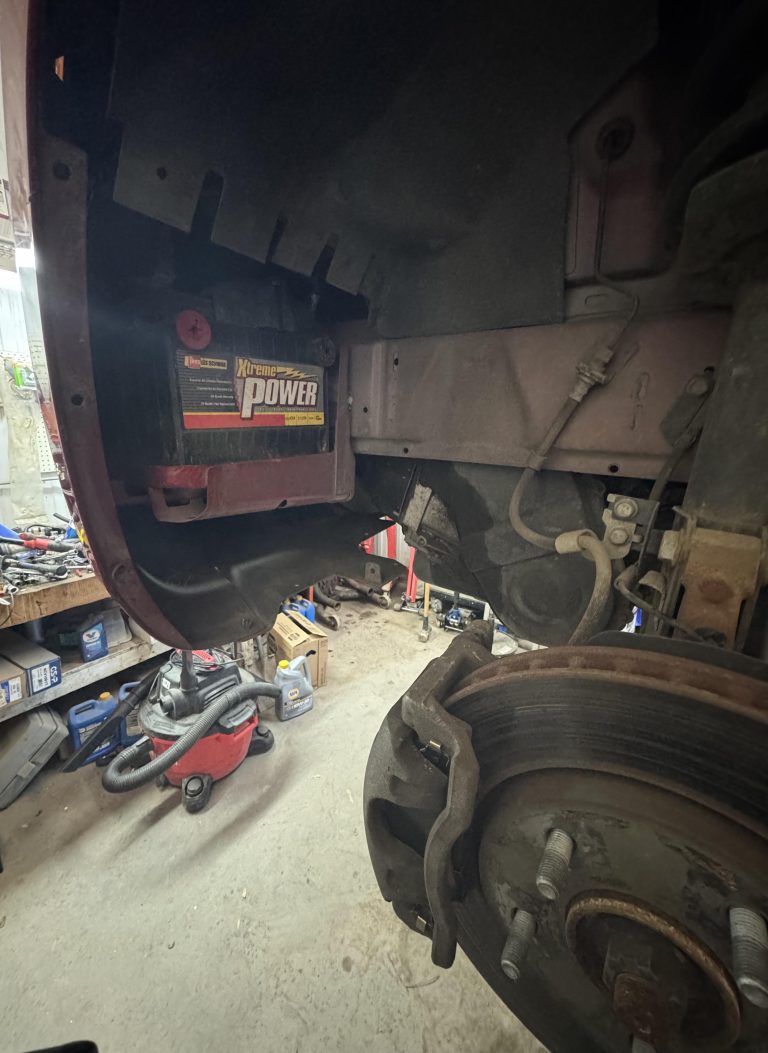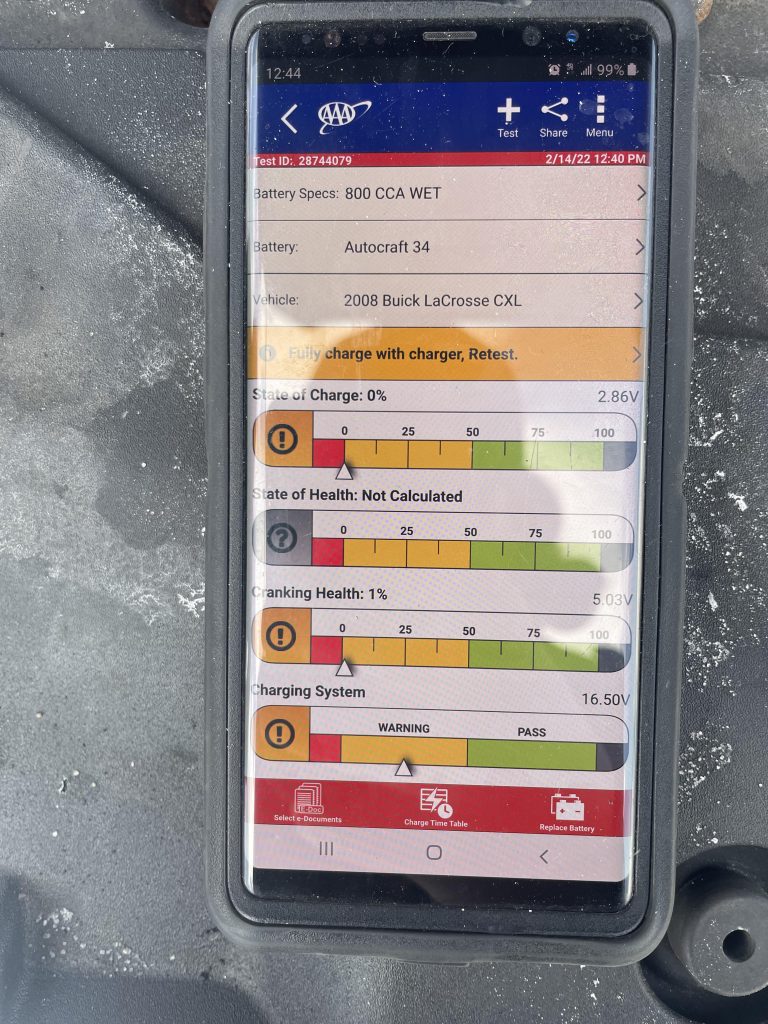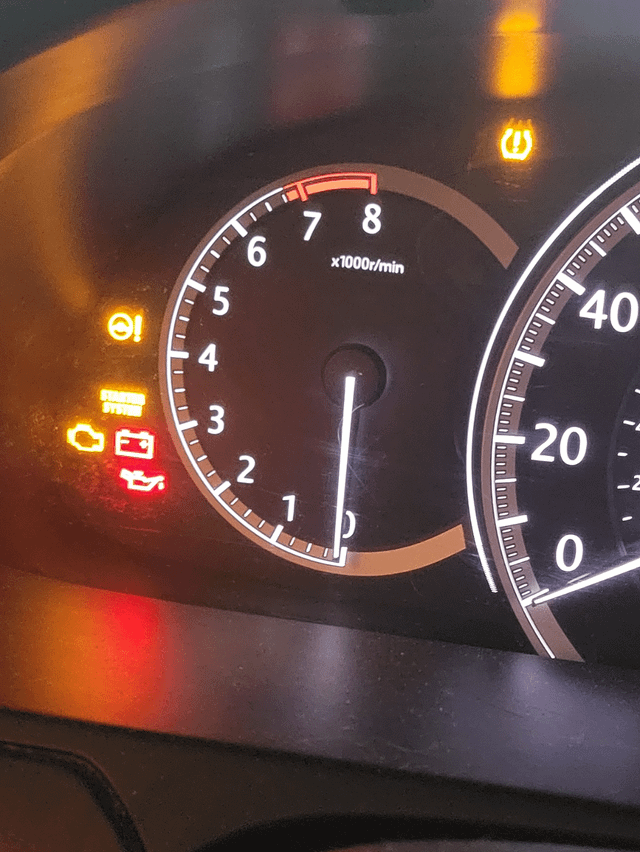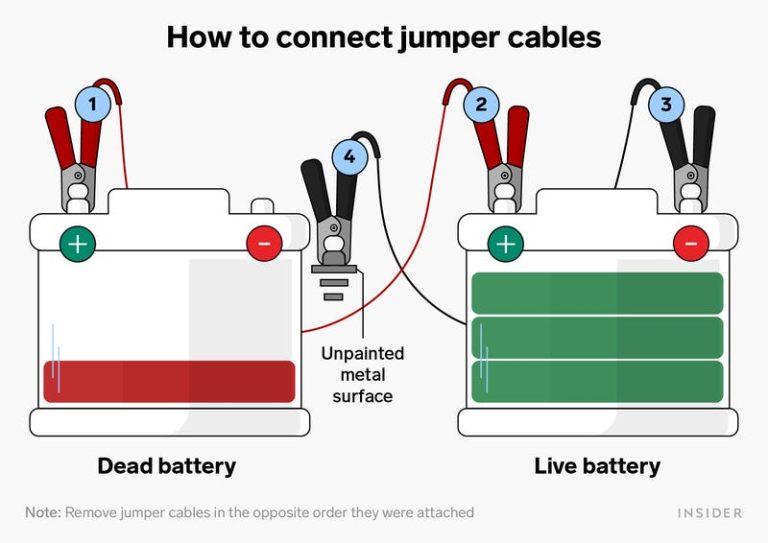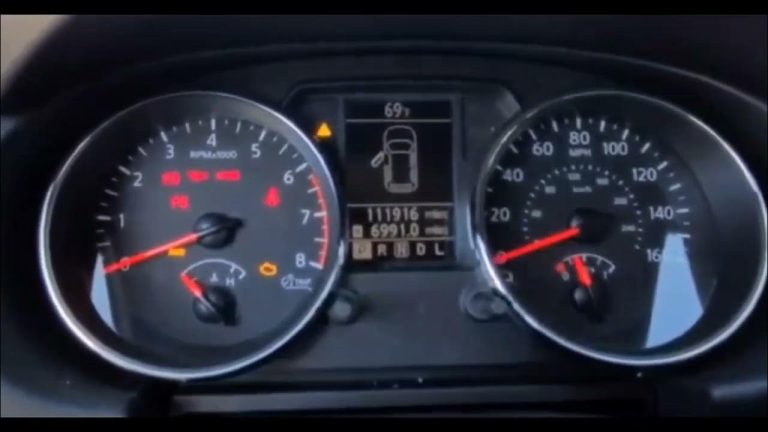Car Seat Policy in California: Essential Rules Every Parent Must Know
The Car Seat Policy in California requires children under 8 to ride in a car seat or booster seat, and under 2 must ride rear-facing unless over 40 lbs or 40 inches.
You might think you have it all figured out, but small details can make a big difference. You’ll discover exactly what the state requires, common mistakes to avoid, and how to ensure your child travels safely. Keep reading to protect your most precious passenger and drive with peace of mind.
Credit: www.tuolumnecounty.ca.gov
Car Seat Policy in California
California Car Seat Laws
California car seat laws protect children during car rides. These laws help keep kids safe in accidents. Every parent and caregiver must follow these rules to avoid fines and injuries.
The laws vary by a child’s age, weight, and height. Car seats must fit the child correctly. Using the right seat reduces injury risks in crashes.
Read More: Car Window Lubrication: Ultimate Guide to Smooth Operation
Car Seat Requirements For Infants
Infants must ride in rear-facing car seats. This is mandatory until the child is at least 2 years old. Rear-facing seats support the baby’s head and neck in crashes.
Rules For Toddlers And Preschoolers
After age 2, children can use forward-facing car seats. The seat must have a harness system. This keeps toddlers secure and reduces movement during impact.
Booster Seat Use For Older Children
Children who outgrow forward-facing seats need booster seats. Boosters raise the child for proper seatbelt fit. Kids usually use boosters until they are 8 years old or 4 feet 9 inches tall.
Seat Belt Laws For School-age Kids
Children over 8 or taller than 4 feet 9 inches must use seat belts. Seat belts must fit correctly across the chest and lap. Proper use lowers the chance of serious injury.
Penalties For Not Following Car Seat Laws
Violating car seat laws can lead to fines and citations. Police officers enforce these rules strictly. Protecting children is the top priority on California roads.
Read more: Subaru Outback Steering Wheel Locked How to Fix: Quick Easy Solutions
Age And Weight Requirements
California has clear rules about car seats for children. These rules focus on the child’s age and weight. They help keep kids safe during car rides. Understanding these rules is important for every parent and caregiver.
Rear-facing Car Seats For Infants
Infants must ride in rear-facing car seats. This rule applies until the child is at least 2 years old. The seat must fit the child’s weight and height. Rear-facing seats protect the head and neck better in crashes.
Forward-facing Car Seats For Toddlers
After 2 years old, children can use forward-facing seats. The child must still meet the seat’s weight limit. These seats have a harness to keep the child secure. They provide strong protection for toddlers as they grow.
Booster Seats For Older Children
Booster seats are for children over 4 years old. The child must weigh at least 40 pounds. Booster seats help the seat belt fit the child properly. They raise the child so the belt sits across the shoulder and lap.
Seat Belt Use For Big Kids
Children can use a regular seat belt after outgrowing booster seats. Usually, this happens when the child is 8 years old or weighs 80 pounds. The seat belt must fit correctly across the chest and hips. Proper seat belt use reduces injury risk in crashes.
Types Of Car Seats Allowed
California law requires children to use car seats suited to their age and size. Different car seats fit different stages of a child’s growth. Choosing the right type keeps your child safe and follows the law. Here are the main types of car seats allowed in California.
Rear-facing Car Seats
Rear-facing car seats are for infants and toddlers. They protect the head and neck in a crash. Use rear-facing seats for children under 2 years old. Some seats allow use beyond age 2 if the child fits the weight and height limits. Always follow the car seat manual for proper use.
Forward-facing Car Seats
Forward-facing car seats suit toddlers and young children. They have a harness to keep the child secure. Use these seats after the child outgrows the rear-facing seat. Most forward-facing seats fit children from 2 years old up to about 5 years. Check weight and height limits to ensure a proper fit.
Booster Seats
Booster seats help older children use the car’s seat belt properly. They raise the child so the seat belt fits well on the shoulder and lap. Use booster seats for children who have outgrown forward-facing seats. Usually, this applies to kids aged 5 to 8 years old. The child must fit the seat belt correctly before moving out of a booster.
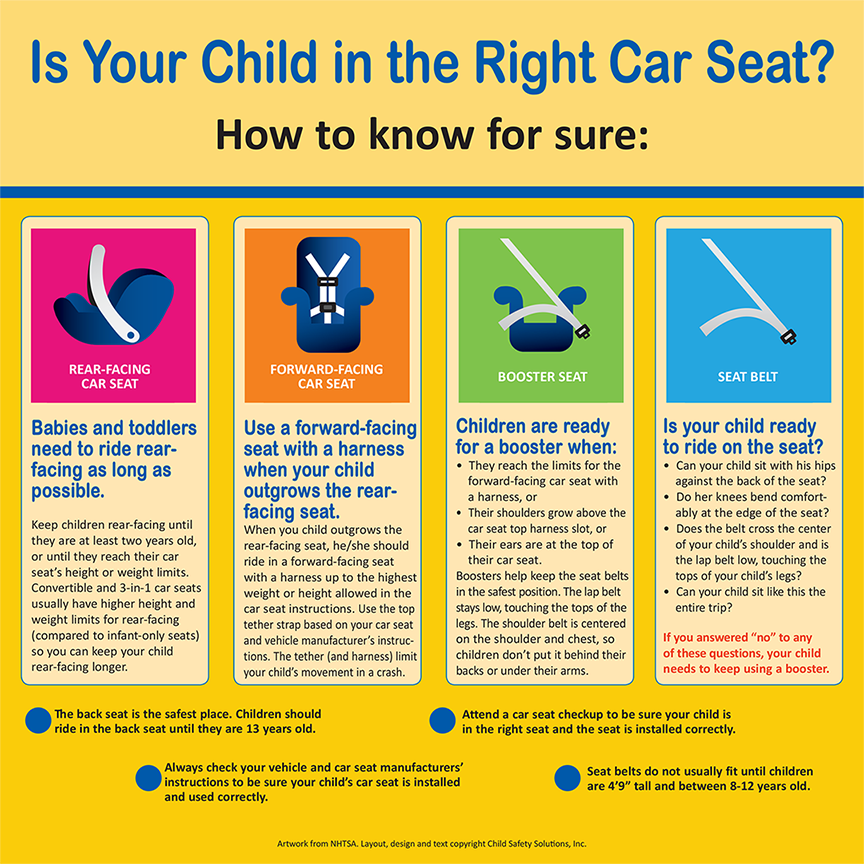
Credit: www.sccfd.org
Installation And Safety Tips
Installing a car seat correctly is essential for your child’s safety. Proper installation reduces injury risks during accidents. Follow simple steps to ensure the seat fits well and protects your child.
Check the car seat type for your child’s age and weight. Secure the seat tightly using the seat belt or LATCH system. Avoid loose straps or moving parts. Always read the car seat manual carefully.
Choosing The Right Location
The back seat is the safest place for a car seat. Place the seat in the middle if possible. This spot offers extra protection from side impacts. Avoid front seats with airbags for children under 13 years.
Securing The Car Seat
Use the vehicle’s seat belt or LATCH anchors to secure the seat. Tighten the straps so the seat does not move more than one inch side to side. Check the angle to keep your child’s head from falling forward.
Adjusting Harness Straps
Straps must fit snugly over your child’s shoulders. Position the harness at or below the shoulders for rear-facing seats. For forward-facing seats, straps go at or above the shoulders. Buckle the chest clip at armpit level.
Regular Safety Checks
Inspect the car seat often for wear or damage. Make sure the seat is still tight after every trip. Confirm the harness fits as your child grows. Replace the seat after any moderate or severe crash.
Penalties For Non-compliance
California has strict rules about car seats to keep children safe. Not following these rules can lead to penalties. These penalties help make sure parents and caregivers use car seats correctly.
Penalties can affect your wallet and your driving record. It is important to understand what happens if rules are broken.
Fines For Not Using A Car Seat
Drivers caught without a proper car seat face fines. The fine amount can start at $100. It may increase if the violation is repeated. Fines encourage drivers to follow safety laws.
Impact On Driving Record
Violations may add points to your driving record. Points can lead to higher insurance costs. Too many points may cause license suspension. Safe driving habits help avoid these problems.
Legal Consequences In Case Of Injury
Failing to use a car seat can lead to legal trouble if a child is hurt. Charges may include negligence or child endangerment. Courts take child safety very seriously.
Importance Of Compliance
Following car seat laws protects children’s lives. It also prevents fines and legal issues. Always use the right car seat for your child’s age and size. Safety first, always.

Credit: www.ots.ca.gov
Frequently Asked Questions
What Are The Age And Weight Requirements For Car Seats In California?
Children under 8 years old must use a car seat or booster seat. They should weigh less than 80 pounds or be shorter than 4 feet 9 inches.
Can A Child Sit In The Front Seat With A Car Seat In California?
Children under 8 years old must ride in the back seat unless the vehicle has no back seat or all back seats are taken by younger children.
What Penalties Apply For Not Following California Car Seat Laws?
Violating car seat laws can result in fines and points on your driving record. It also risks the child’s safety.
- Children under 2 years must ride in a rear-facing car seat, unless over 40 lbs or 40 inches tall.
- Kids under 8 years old must be secured in a car or booster seat.
- Children 8 and older or at least 4’9” tall can use a regular seat belt.
Conclusion
California’s car seat laws keep children safe on the road. Parents must follow age and size rules for seats. Proper use of car seats reduces injury risk in crashes. Always check for updates on state policies. Safety starts with knowing and using the right seat.
Protect your child by following California’s car seat policy. It’s a small step that makes a big difference. Stay informed, stay safe, and keep kids secure every trip.

